To Colour….
As part of Sensory Spaces: An Autism Friendly Project, I ran two sessions exploring the theme of colour. The first was rather abstract, I asked questions such as; What does colour smell like? What does colour feel like?
For a child on the autistic spectrum, a question like this may be confusing, some autistic people think and understand literally. So instead of directing these questions at the children, I answered and speculated on them myself. These abstract questions became vehicles for the workshops documented below.
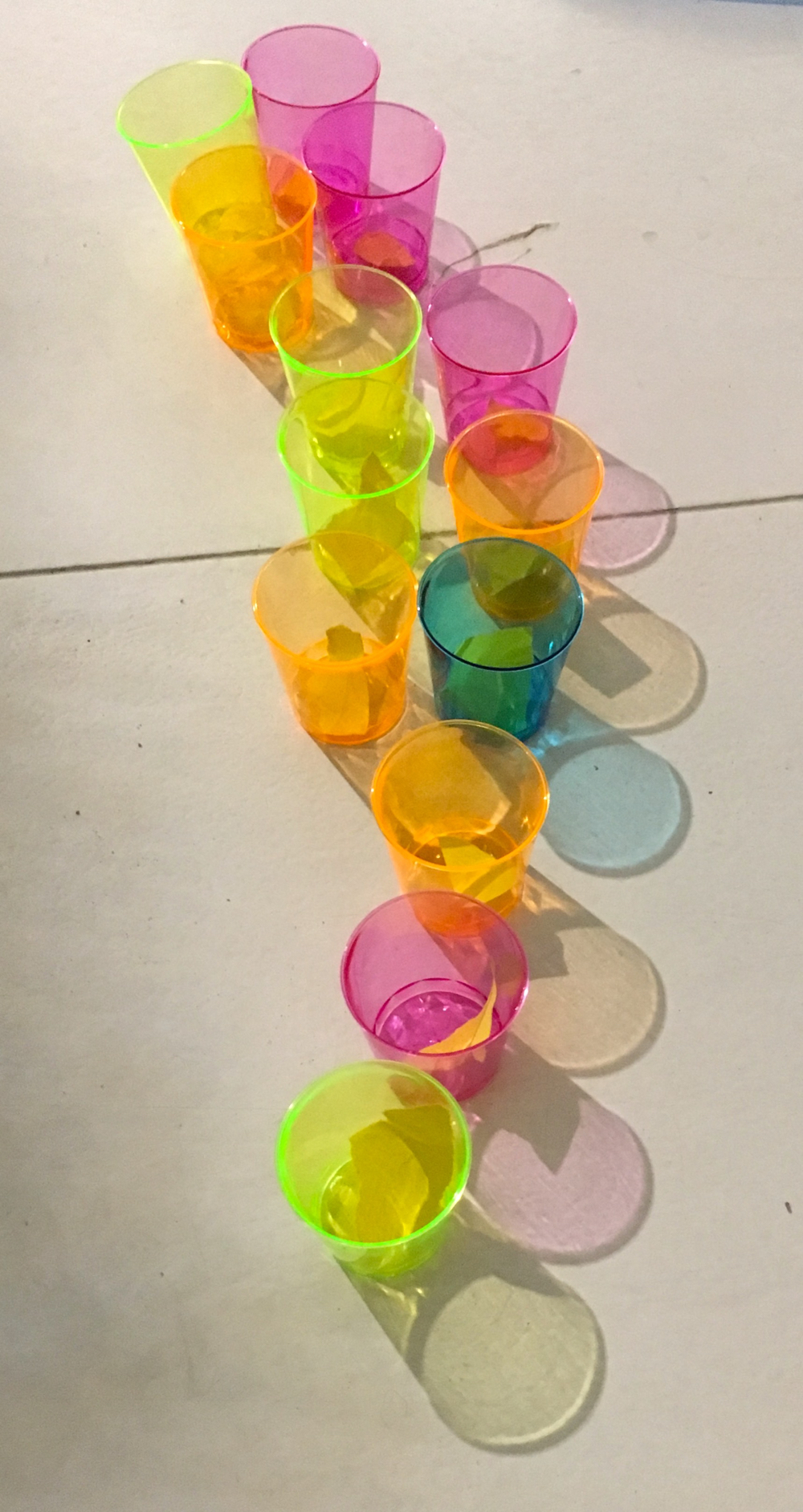
Colour and senses
I created a ‘colourful smells’ area by attaching bright flowers to ribbons and filling fabric pouches with herbs and spices. A simple chart of coloured paper allowed the children to match the smells with colours. Pepper was matched to black and some purple flowers were matched to the colour purple. Perhaps with another set of children the outcomes would have been different and less literal, but the group engaged with the task, considered basic colour theory and recognised smells. The children made decisions and developed their sorting and matching skills.
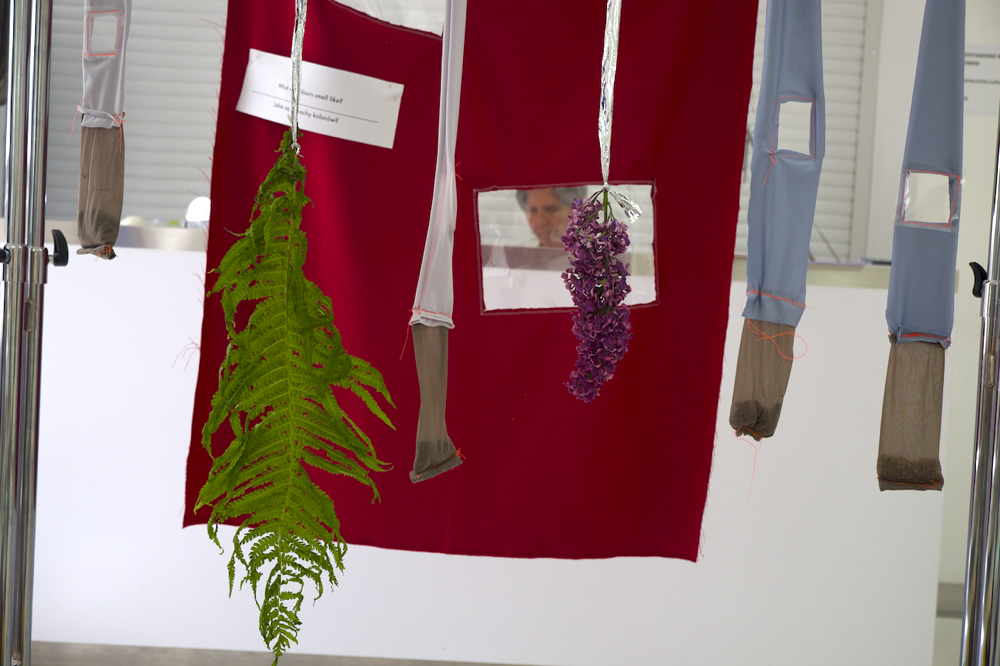
We ate slices of colourful, juicy, fruits such as, melon, orange, kiwi, and strawberries. Closing our eyes we thought about how the fruit tasted and felt, through emotions and sounds. Where possible, we described the sensations verbally.
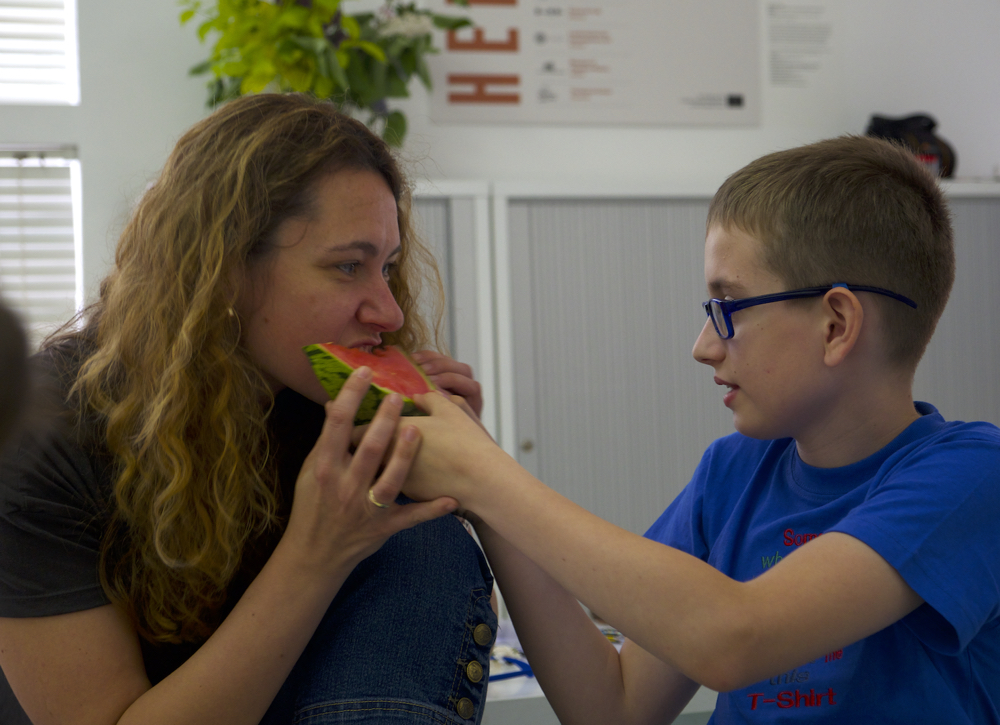
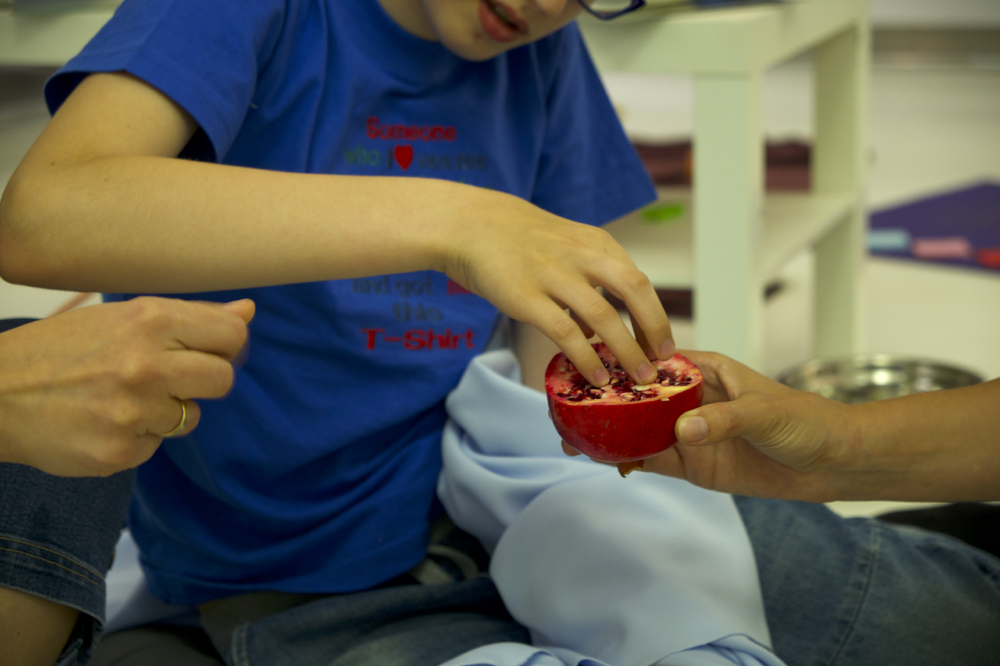
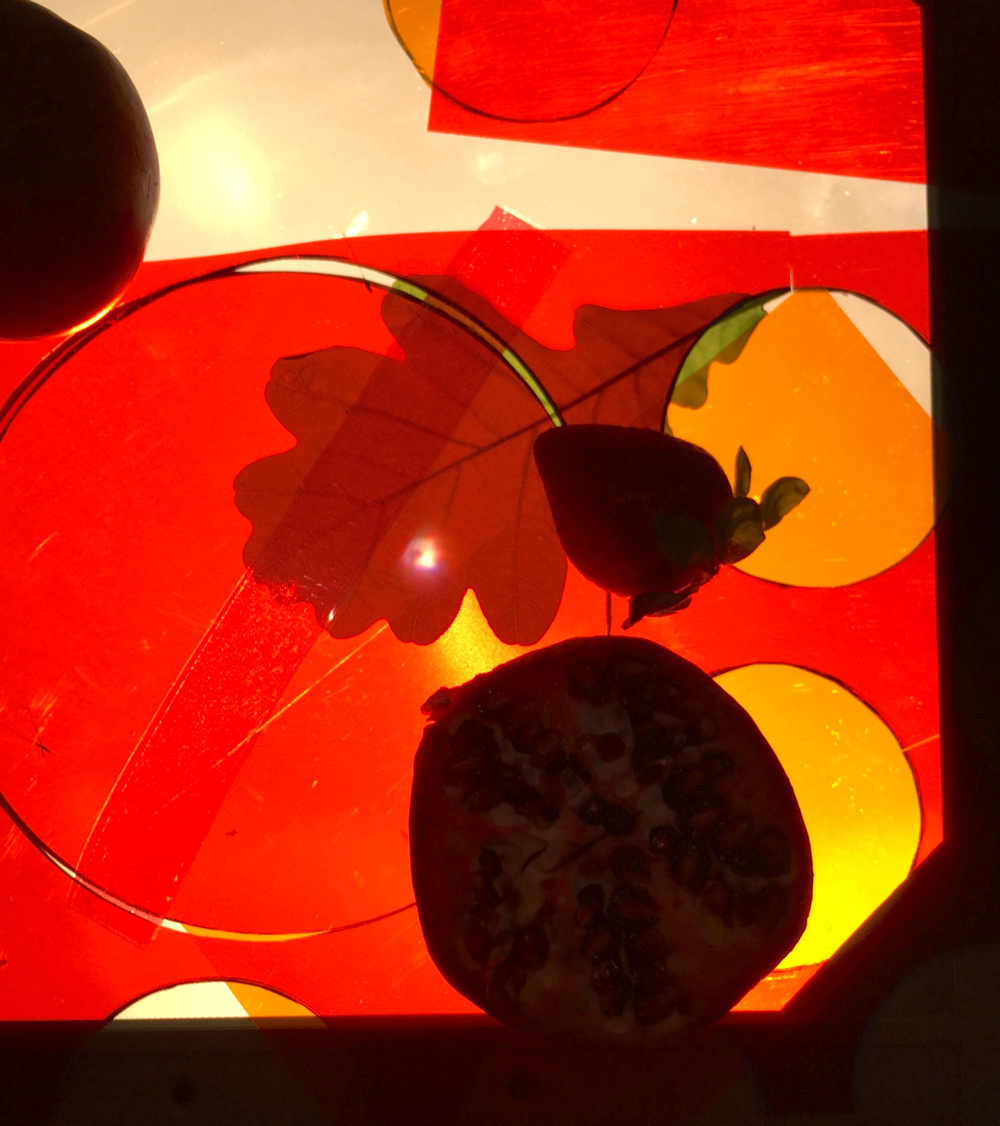
We viewed the world through coloured lenses. Red was always the most popular colour. I wonder why this is? Perhaps because it’s such a vibrant colour. Does it make people feel safe, warm or powerful, like a superhero? Is red the most emotive and evocative colour? Try looking through colour filters and see how they make you feel.
My wonderful assistant and translator, Monika Gorska, helped me create the flower glasses. Putting on a pair of these unique specs heightened our senses, we could sniff our way around the space, the petals felt cool on our skin, (sometimes they tickled, and thankfully no one suffered from hay-fever)! They were such a genius creation and inspired us to develop further sensory-inspired wearable objects.
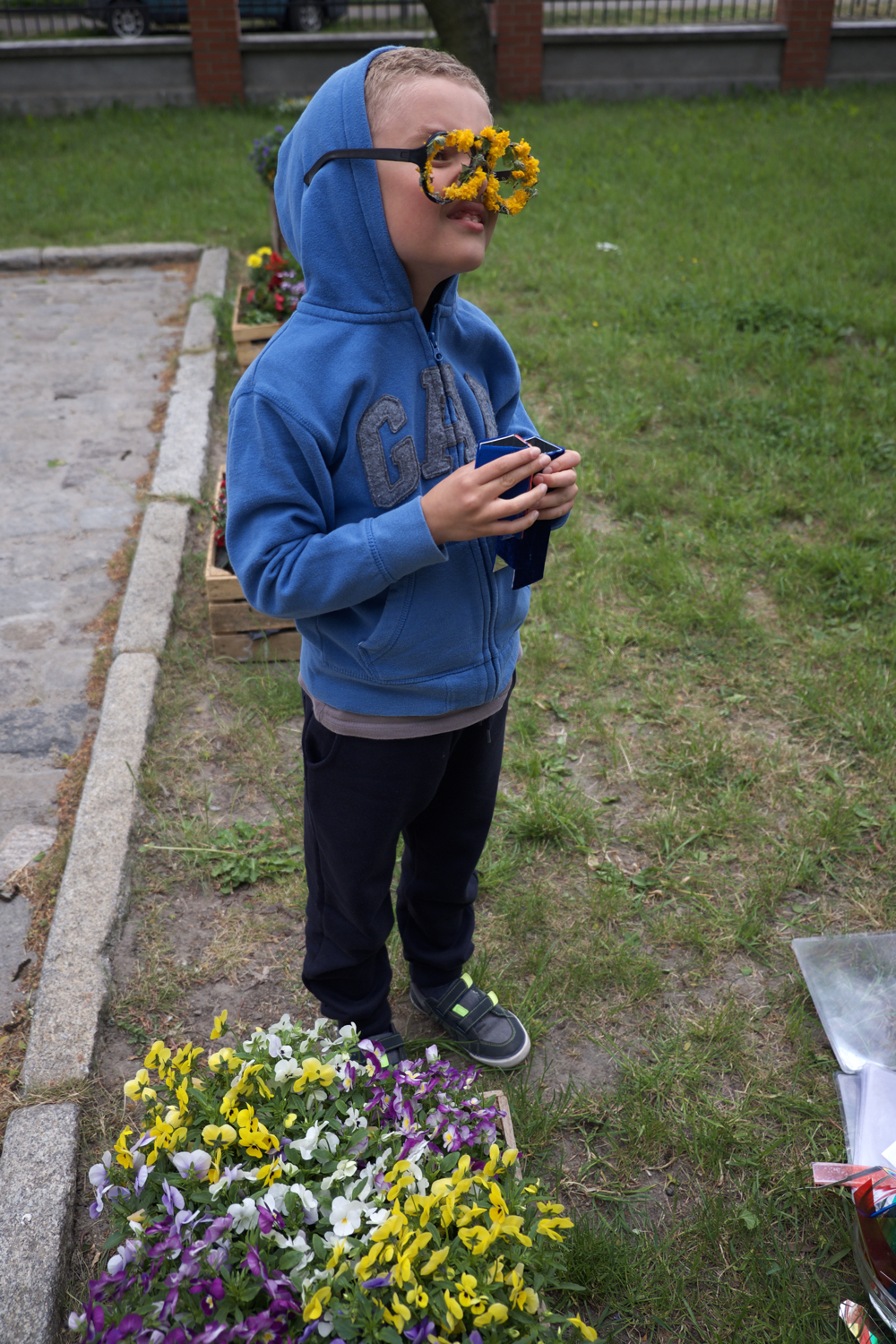
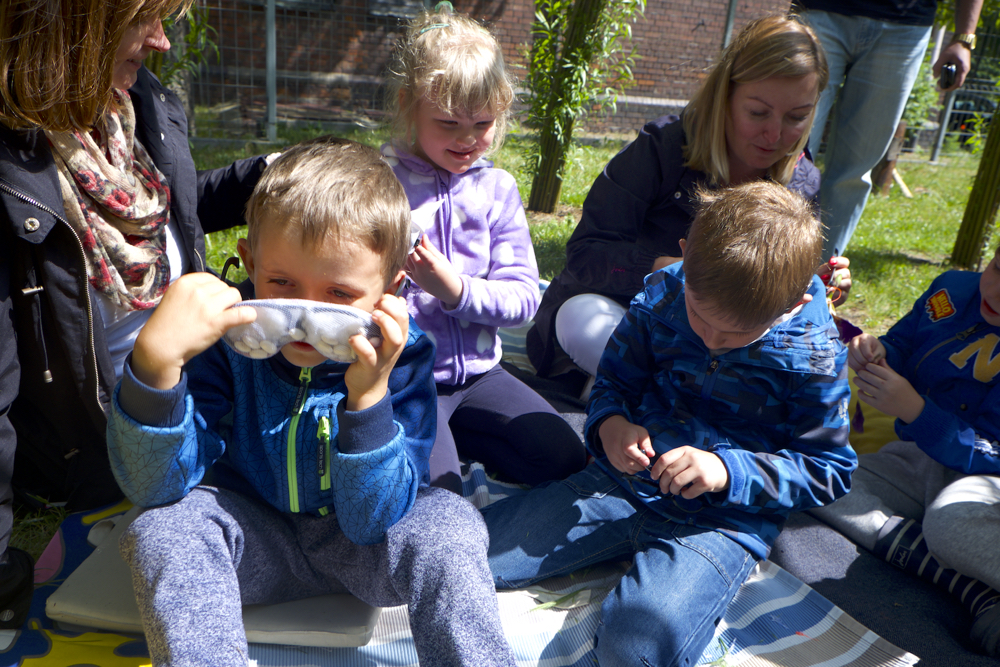
Handmade kaleidoscopes encouraged the children to create moving patterns from the colourful objects we explored in our sessions. All you need is some strips of plastic mirror taped together in a triangular tube, I added extra layers of texture by wrapping them in super, soft velvet.
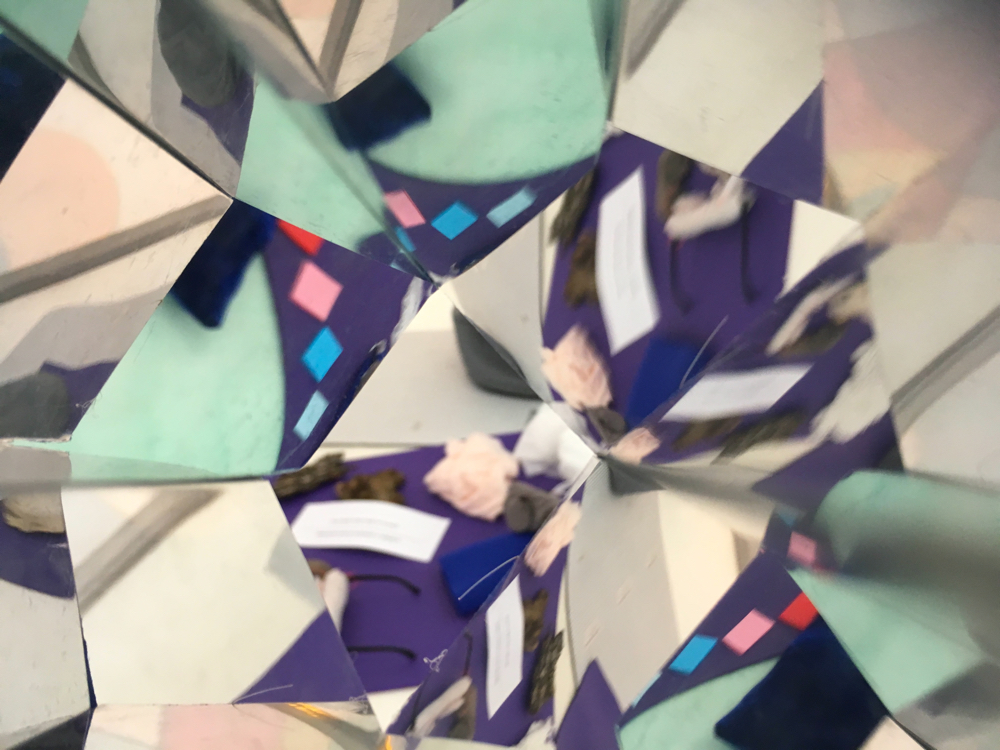
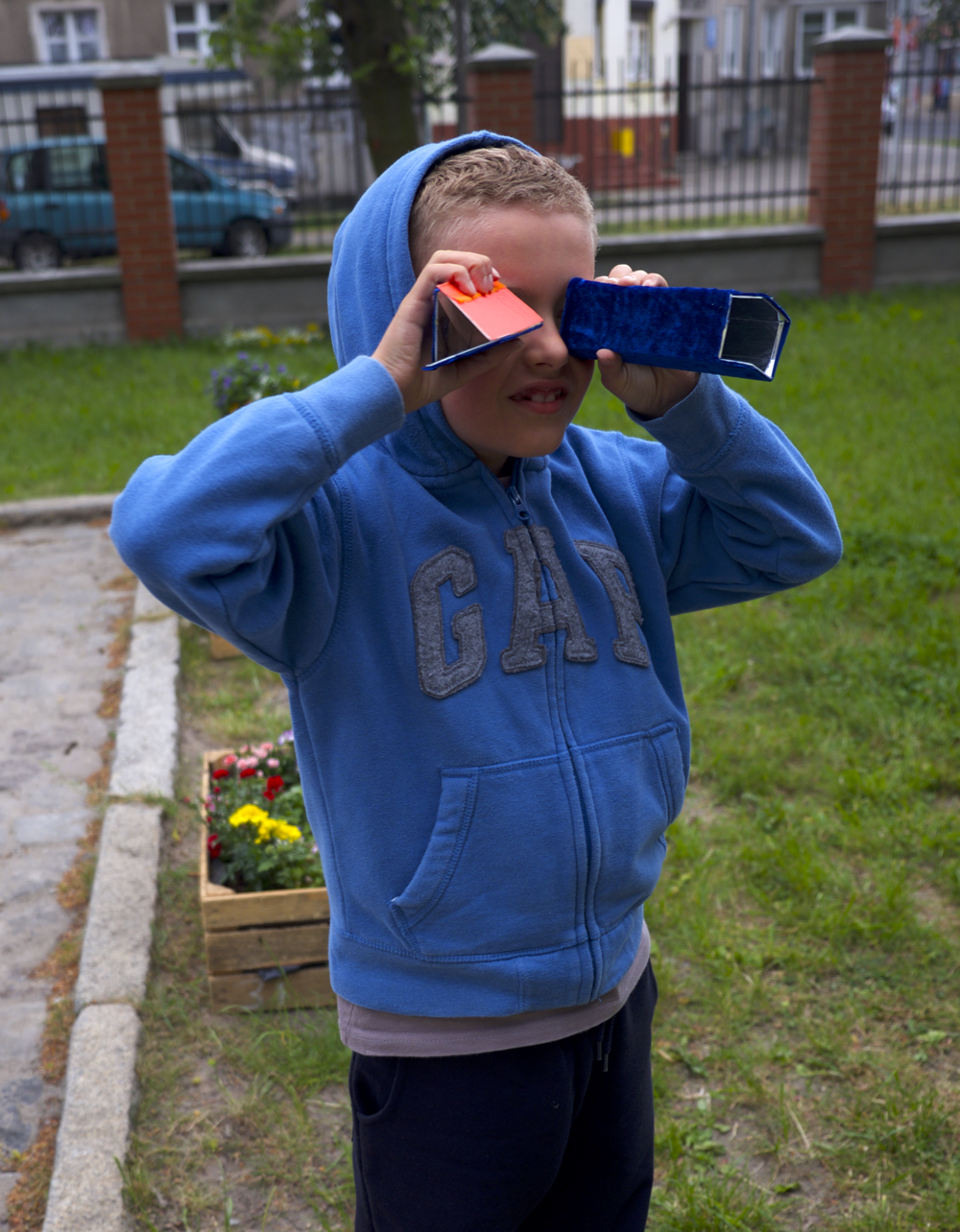
Colourful food dye in salt dough worked a treat (just be aware of some children wanting to eat all the dough)! We were able to mix colours, develop fine motor skills and make whatever we wanted.
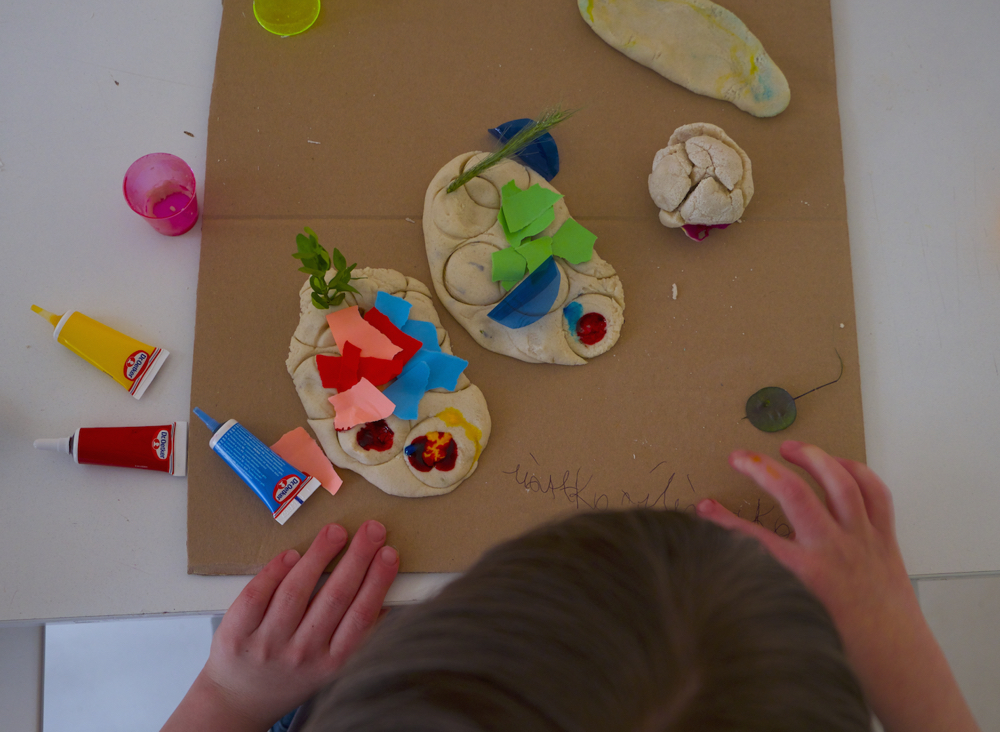
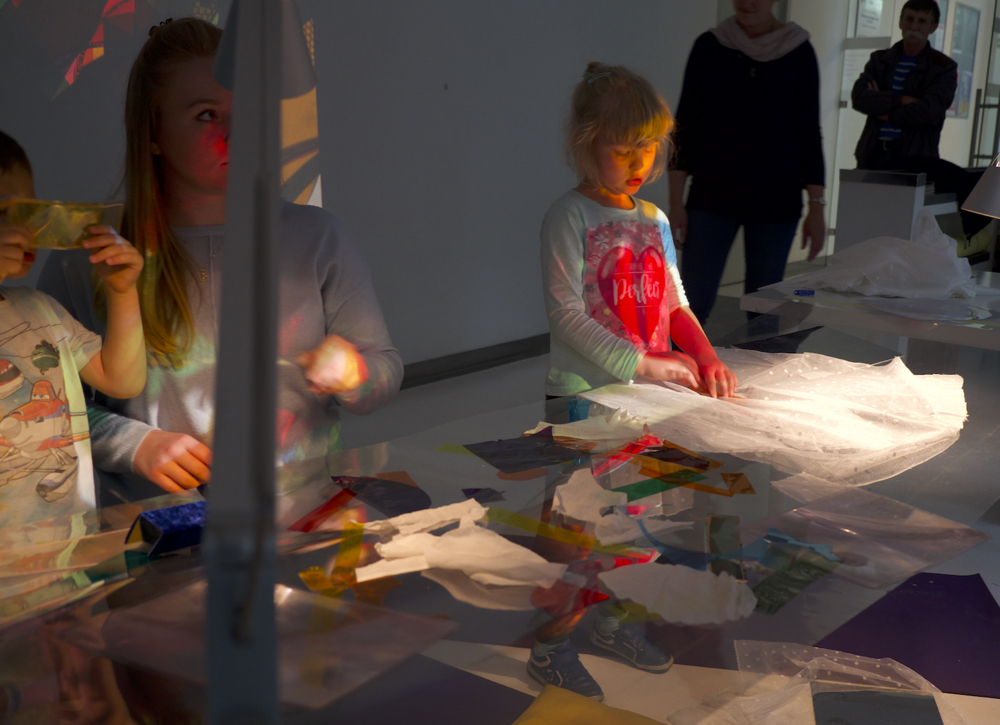
Using an old overhead projector, we were able to physically immerse ourselves in colour, bathing in the light and gentle heat. The colour wrapped around our bodies, reflected onto our skin and cast dramatic shadows on the walls, floor and ceiling.
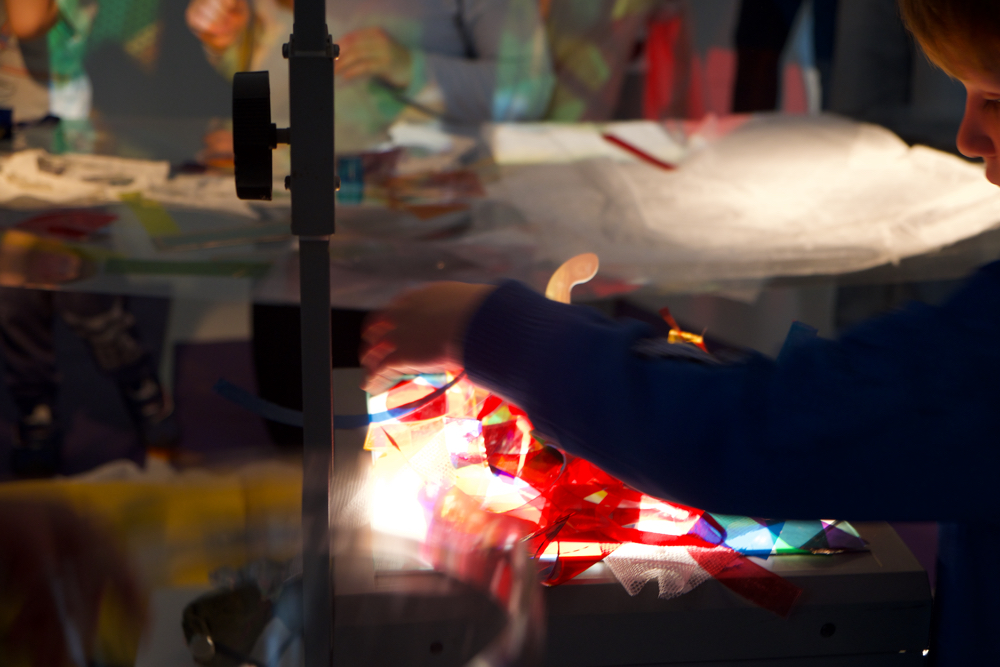
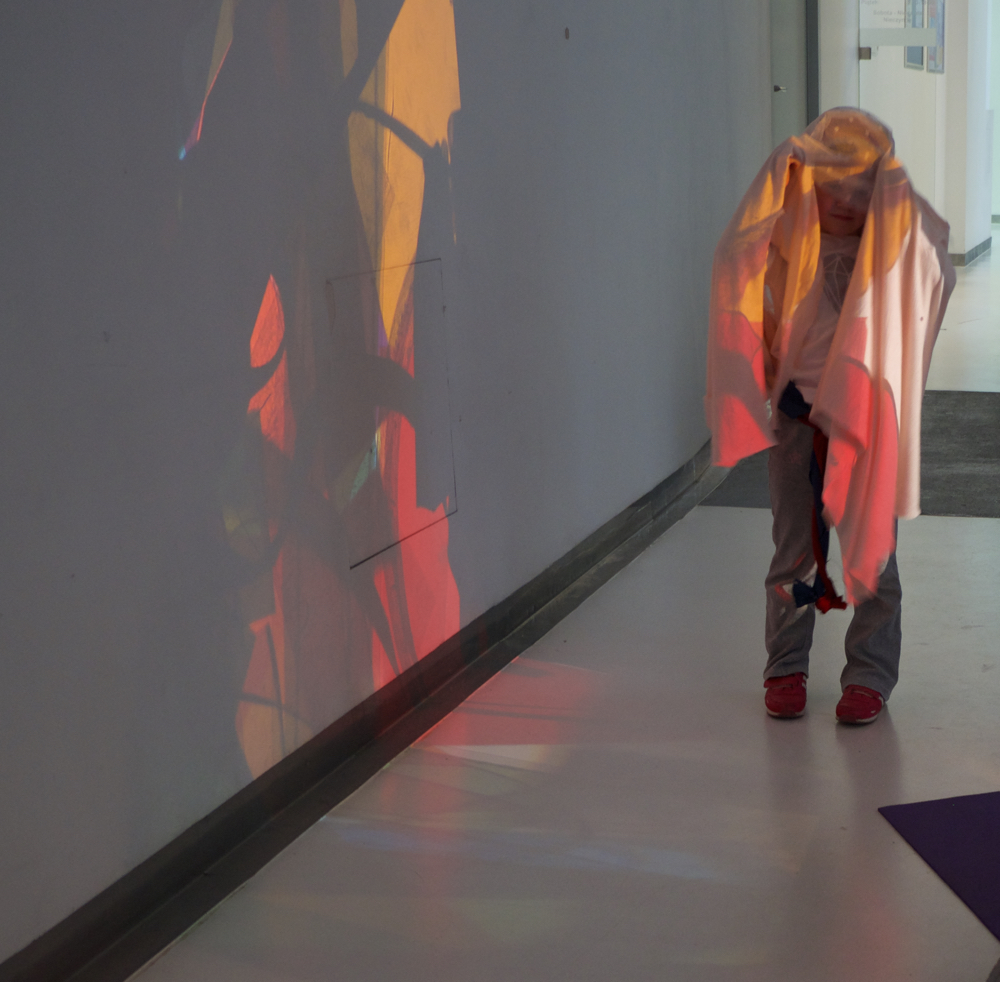
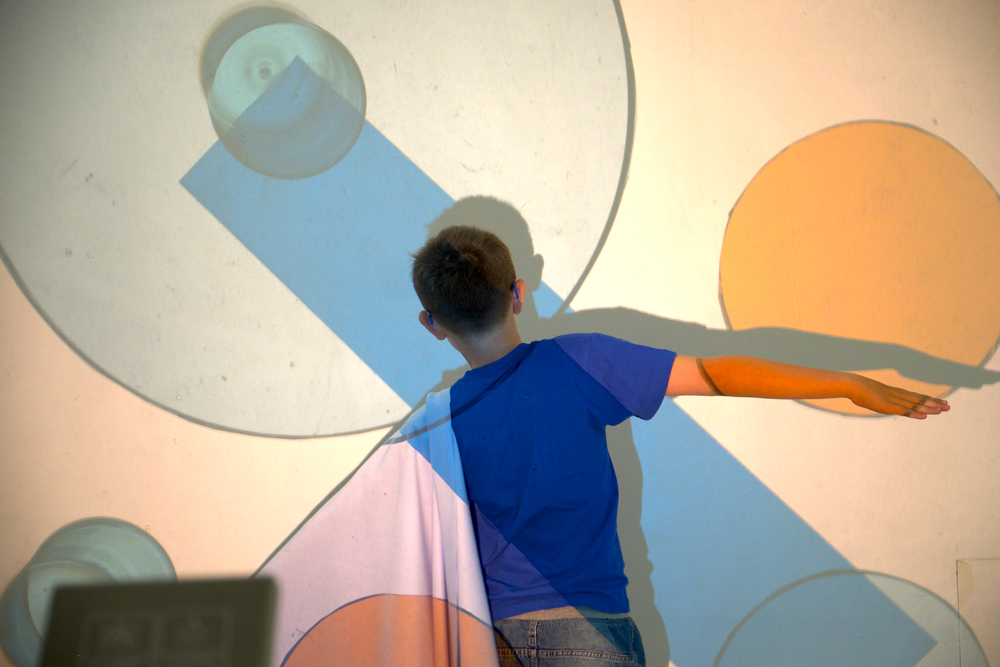
Colour and music go hand in hand, both are emotive forms of creative language. When I incorporate music into a session I can alter the mood from bright, animated vibrancy to a calm sea of tranquility. Consider, what sounds do colours make? Can you connect certain forms of music to different colour palettes. What happens when you take all the colour away? What do black and white sound like? Have fun with your ideas, explore new music genres and create soundtracks for your lessons.
Tip: Play the music through something that the children can control, allow them to switch it on and off. Use visual signs where needed.
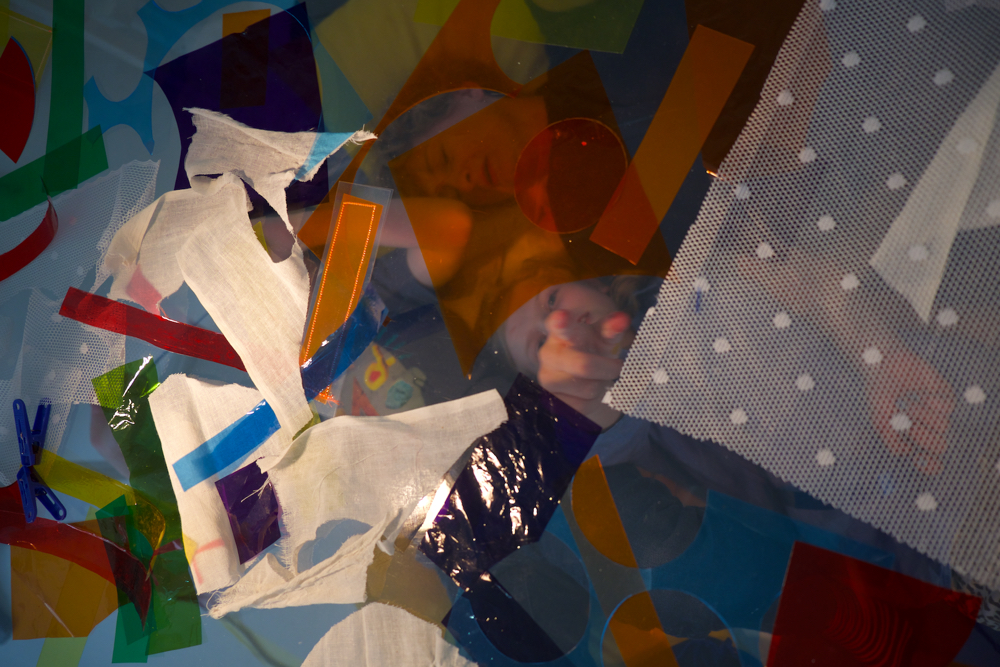
Through discussions with parents of children with autism, I have developed the confidence to be more adventurous with the planning of my projects. As long as I feel safe and confident about what I’m leading then I think it’s great to take risks, that’s how we learn! If you’re not sure what will happen, then give it a go…
See more posts from Sarah in this series by following this link: Sensory Spaces: An Autism-Friendly Project
evelynarts.moonfruit.com – work portfolio
evelynartsunique.com – online shop
